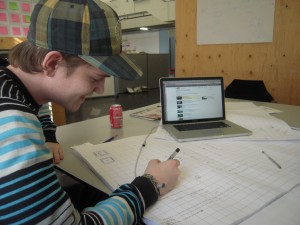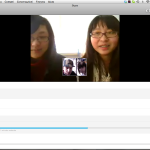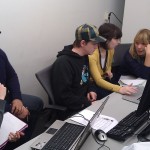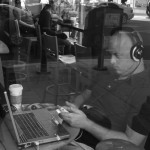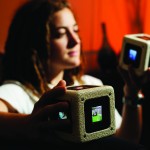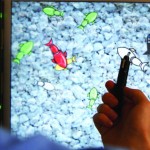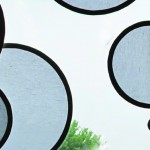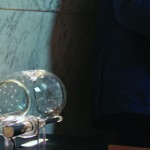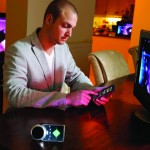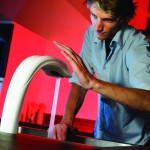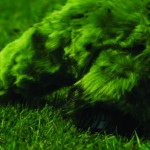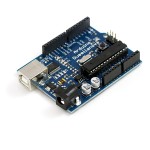[youtube]http://www.youtube.com/watch?v=3ekwrPi1k8M[/youtube]
Flexible Workspace The Hub in Amsterdam 25-03-11
[youtube]http://www.youtube.com/watch?v=oDWtrREvP_U[/youtube]
First Presentation with Chinese teammates 25-2-11
Concept Presentations Team 1: Making it social
Today we presented our concepts to our Chinese friends and got a presentation from them.
We discussed concepts the different teams came up with and gave feedback to each other. From here on we’re going to visualize our concepts more, eventually leading to a prototype for the mid-term exhibition.
New Entrepreneurs (team 1) – Monday, 14 March meeting
Here’s the presentation, with new research on entrepreneurs, that we shared with our chinese teammates.
Defining the New Entrepreneur
And here’s their work plan for the next steps.
Project Plan
New Entrpreneurs (team 1) – Theme presentation
As written in the post below, on March 4th we shared our work with the other 2nd year team and our coaches.
Here’s our presentation.
Make it social – Theme presentation (team1)
And here’s some notes and feedbacks from the meeting.
– Think about security. How can a new entrepreneurs make his ideas private in a new world where internet (and so the absence of privacy) domains? For example with business cards, not everyone should have it! If you make it more exclusive it could be more interesting. You can create a network of new entrepreneurs that really have new ideas.
– Bring the new!!!! Not just mix together already existed applications, but think about how your design can really change our reality.
– Talk to new entrepreneurs! Take away the glossy part (sharing, connecting and etc… it’s cool stuff but it’s not enough) and think about what they’re really worried about and how to really help them.
– New entrepreneurs don’t have experience and competence, they don’t have money and time: in six months they have to build up a business. How can you help them? They are CONFUSED! a lot of tools already exists…
– Most of the things you’re proposing are stuff that already exist (like helping platform or agenda tracker)….
– How can you help entrepreneurs globally, from different cultures with one platform? (cross-cultural collaborations)
– Try to define the “new entrepreneurs” in a better way. What he/she is for real, not what you think he is. why you say they’re traveling???? Who told you? Find real examples (Tavi, Nalden…)
– Analyze new trends and new technology. What already exist in the market? Why new entrepreneurs use some tools and not others?
NEXT STEP:
• taking a step back by doing more research on trends, technology and defining “new entrepreneurs”.
• come up with other concepts.
Theme Presentations Realities…
“Pitch” the ideas: Project presentations on Friday, March 4
On March 4, all the 2nd year projects from theme Realities will give “elevator pitch” presentations to each other and to their coaches:
9.30-9.35: Meeting and general intro
9h35-9h40: Intro New Entrpreneurs
9:40-9:50: New Entrpreneurs 1 (Kirsten) – second years group that work with 2 chinese students
9:50-9.55: Feedback
9:55-10.05: New Entrpreneurs 2 (Kirsten) – second years group that work with 2 chinese students
10:05-10:10: Feedback
10:10-10:15: Intro ID’X
10.15-10.25: ID’X (heleen)
10:25-10:30: Feedback
10.30-10.40: ID’X (Matthias)
10:40-10:45: Feedback
10.45-10.55: ID’X (Jorge)
10:55-11:00: Feedback
An Introduction.. China Meets Italy Meets Holland
DPA34: Work in progress
Make it Social – New Entrepreneurs [DPA34 Project Description]
The world around us is changing fast, and not all the changes are positive. We’re facing the biggest natural, social and economic challenges our world has ever seen. This project is about the new realities in this world changing and how a New Generation is there to rip up the rulebook and start over.
In this worldly context of change, there is an upcoming influence of a generation of new entrepreneurs, that experiences creative freedom. They don’t wait for something to happen, they start doing it.
With their desire to create and the technical gear (hard & software) available, they are starting their own little businesses – especially if they can’t find their creative freedom within the existing corporations.
Digital is no longer something new, it’s a given. This creates a gap between the perception of technology in the heads of this generation and their client’s perception that digital is a specific discipline.
This is a network-generation of entrepreneurs that is characterized by a cocktail of the concepts ‘multi’, ‘sharing’, ‘inline’ and ‘open’ and that will change the future as they like to do it on their own terms.
Continue reading
Design Meets Psychology: Putting Maslow’s Hierarchy of Needs to Work
Interesting article by JOSHUA JOHNSON. Read it from UXBOOTH. He concludes “… Maslow’s Hierarchy of Needs is one of many models that you can use as a designer to help you understand consumer behavior so you can better target your designs in an effective manner”
Realities, a new start
On Feb 4, at the theme Realities, we welcome the students joining the force.
Internship 250K
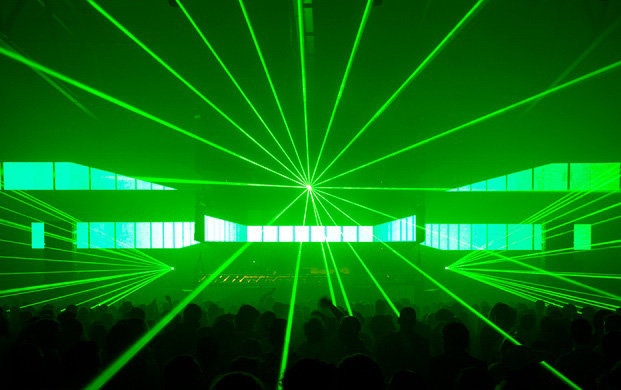 250K is a company of Sander Reneman, Carlo Ruijgers and Kevin Walenciak who have been creating unique shows for the international dance and concert industry for several years now. The main goal of 250K is creating concept and designs and translating those to the overall experience of the event and show. Video plays an important part in this as they strive to implement this into the stage design as good and innovative as possible. 250K works closely together with the VJ collective Eyesupply, together they create the entire experience for events and festivals.
250K is a company of Sander Reneman, Carlo Ruijgers and Kevin Walenciak who have been creating unique shows for the international dance and concert industry for several years now. The main goal of 250K is creating concept and designs and translating those to the overall experience of the event and show. Video plays an important part in this as they strive to implement this into the stage design as good and innovative as possible. 250K works closely together with the VJ collective Eyesupply, together they create the entire experience for events and festivals.
For videos of my work, please click the more button
Grand café de ID
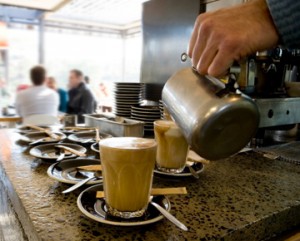 ‘Grand Café de ID’ is a temporary café during the Dutch Design Week, it is here where visitors of the Dutch Design Week can have a cup of coffee or tea and rest a bit. While lounging in the café they will experience that Grand Café de ID is not just ordinary: it is connected with several other places in Eindhoven. You and the people in these locations, who are also enjoying the Grand Café de ID are brought together by our translocal system, as if you are having a coffee together. You can exchange your ideas and observations about the Dutch Design Week, or even more..
‘Grand Café de ID’ is a temporary café during the Dutch Design Week, it is here where visitors of the Dutch Design Week can have a cup of coffee or tea and rest a bit. While lounging in the café they will experience that Grand Café de ID is not just ordinary: it is connected with several other places in Eindhoven. You and the people in these locations, who are also enjoying the Grand Café de ID are brought together by our translocal system, as if you are having a coffee together. You can exchange your ideas and observations about the Dutch Design Week, or even more.. Want to know more?
We have two locations installed: In the ID café and the Orange space, which are connected.
Visit us and try it out!
Project: ID’X @ DDW
Coach: Jorge Alves Lino
Students: Eline Hoftiezer, Dounia Bourjila, Rincke Driessen
Year: B2.1
Realities: Design manipulates the boundaries
On December 17, the faculty board visited the theme Realities. The following presentation was given to show:
- Development of the theme over time
- Participating members/groups
- Vision & Ambition
- Research (plans)
- Education (plans)
- Integration
- Organizational structure, infrastructure (available + planned)
[DOWNLOAD|PDF, 3M]
Realities at ID’10, Dutch Design Week
“Blurring the real and the virtual” is one of the selected themes being presented at ID’10: “...the ubiquitous and adaptive systems that our students design weave themselves into the fabric of everyday life. This implies that the boundaries between the real and the virtual are blurring. But what are the implications of this merger? How to respond to these new challenges and opportunities?”
A few projects from the theme Realities are exhibited at ID’10.
|
Cueb, by Connie Golsteijn. Coach: Elise van den Hoven This project aimed at facilitating parent-teenager communication about the parents’ past. The final concept, called Cueb, is an interactive digital photo medium which allows parents and teenagers to explore individual and shared experiences, thus triggering an exchange of stories. Through interactive controls like shaking and connecting cubes and by transferring and locking photos, surprising photo results are displayed to trigger memories. Cueb was evaluated in four families. The evaluation showed that the concept triggered and facilitated sharing experiences and telling stories significantly better than a more traditional photo medium. |
|
Tangible interaction device for instant messaging. by Koen Beljaars, Jelmer de Maat, Rick Dutour Geerling, Sivaraaj Soundarajan. coach: Christoph Bartneck TIM is a product that makes it possible to bring a part of the interaction with an instant messaging program into the living room. The product provides an overview of all the different contacts displayed as fish in an aquarium. Every fish represents a contact person. The color and the speed of each fish shows the status of that contact (online, away, offline etc.) en whether the contact is sending a message or not. The touch screen provides an intuitive way of interacting with the fish and makes it possible to read the incoming messages and send quick replies. |
|
Interactive window shades that stimulate a natural and free experience of office spaces. by Teun Vinken. coach: Jorge Alves Lino By creating dynamic shadows inside an office space our modular system blocks direct sunlight from office workers. The aperture of the circle structure varies depending on outdoor light intensity. In addition, the system provides a free and natural office experience. The circular shades provide an outdoor experience in a closed office environment similar to the effect of shadows created by leaves of a tree. This way the sense of being locked-up in the office is reduced and a more pleasant work atmosphere can be created. |
|
sounds like home. by Sebastiaan Pijnappel. coach: Elise van den Hoven Sounds Like Home creates peripheral soundscapes that tell how many people are home and away Two glass vases contain marbles, their number equal to the number of members in a family. One vase indicates “home”, the other “away”. A marble rolls to the “away“ side whenever someone leaves, or the other when someone comes home. The sounds of marbles rolling and bumping into each other compose a gentle soundscape from which the number of people home or away can be derived. |
|
coach: Joep Frens This project aimed at finding new and better control and interaction possibilities for home entertainment systems. Through a wide range of research and explorations a personal remote control has been developed for controlling and transferring media throughout the complete house. Wireless technology enables the remote control to know what devices are nearby and through this it can adapt its control and interaction possibilities. Because it is a personal remote control, every family member now has a personal access point to his or her media. |
|
coach: Lucian Reindl The goal of this graduation project was to design gestural interactions for a kitchen tap and design and build a fully functioning tap accordingly. Every hand-gesture one performs has a certain meaning. This – often culturally determined – meaning can be coupled to the meaning of functions of products we use everyday, such as a kitchen tap. The touch-less nature of this interaction offers an added value to this kitchen tap as dirt and bacteria can no longer be transferred from our hands. |
|
An enviromotive robot that desires nature Conventionally, robots are separated from nature by mere description. As the goal of our project was to develop an emotional robot, we decided to add a layer of environmental awareness to our robot. The |
Hatsune Miku blurs the boundaries:
[youtube]http://www.youtube.com/watch?v=dgjfpoIA054[/youtube]
ID’X @ Dutch Design Week: Seduce visitors!
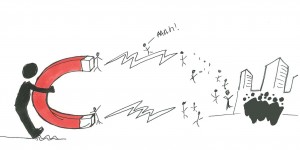 ID’X is the exhibition of department Industrial Design during the Dutch Design Week in the main building (for 2011). You may have visited the exhibition of last year, and this years preparations are already going on the ground floor. For now the exhibition is only happening in the main building, but what about outside?
ID’X is the exhibition of department Industrial Design during the Dutch Design Week in the main building (for 2011). You may have visited the exhibition of last year, and this years preparations are already going on the ground floor. For now the exhibition is only happening in the main building, but what about outside?
There is nothing on the outside of the building, or at the entrance of the TU/e terrain that screams at you to go and visit ID’X… That is what is going to change next year!
The goal is to attract people to the main building from all over Eindhoven, from other DDW-locations, and to create bridges between them. We want to create connections between all the DDW-locations by making use of translocal media, such as a large-sized Skype-systems for example, so people can actually talk with each other.
Want to know more about our concepts we created so far?
Please visit our stand in the Orange Space.
Team: Dounia Bourjila, Rincke Driessen, Eline Hoftiezer, Evy Ansems
Year: B2.1
Coach: Jorge Alves Lino
DPA39 Spotlight Navigation
Tagline:
Developing novel interaction paradigms for Conante’s ‘Spotlight Navigation’ concept.
Brief Description:
Spotlight Navigation as defined by Conante uses a handheld device as a mediator between the physical world and the digital in a smart home environment. When pointed at a surface in the home, the device projects a circular ‘spotlight’ which reveals connections between smart objects. With the aid of simple interactions based on explicit design semantics and abstracted models of connectivity, the device can create, activate and break these wireless connections.
The aim of the project is to develop meaningful mental models of the smart environment and interaction paradigms which will allow the user to understand, and interact with the ‘internet of things’ present in their home on a level that is more intuitive and appealing to sensory-motor skills than complex menu structures.
Keywords:
product semantics, user interaction, smart home, interaction design, semiotics
Participants:
Student: Erik Kogler
Ph.D: Gerrit Niezen, Bram van der Vlist
Coach: Jun Hu
Client: Conante
Internship at 250K
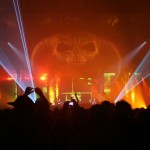 D.M de Klein
D.M de Klein
B3.1 student
Internship at 250K
250K is a company of Sander Reneman, Carlo Ruijgers and Kevin Walenciak who have been creating unique shows for the international dance and concert industry for several years now. The main goal of 250K is creating concept and designs and translating those to the overall experience of the event and show. Video plays an important part in this as they strive to implement this into the stage design as good and innovative as possible.
During my internship, I will design for three music events in the Benelux. These events are large events with a large number of visitors and various artists. The specific events are: Masters of Hardcore at Hasselt, Belgium; Best of Both Worlds, Netherlands; and Fabulous, Den Bosch, Netherlands. For these events, I will support the ideas and concepts stage of the designs. So, I will create ideas and concepts for the venues of the events, from the stage to the hall, from the theme to the visuals.
Arduino Workshop: Presentation Slides
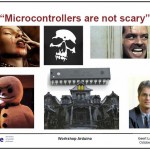 If you have missed the workshop by dr. Geert Langereis on Monday, Oct 4, you might want to have a look at his presentation slides: 2010-Arduino Workshop Langereis (PDF, 1.2M)
If you have missed the workshop by dr. Geert Langereis on Monday, Oct 4, you might want to have a look at his presentation slides: 2010-Arduino Workshop Langereis (PDF, 1.2M)
Arduino quick start course, Monday October 4, HG3.21
As discussed with you, I will give a short workshop about the Arduino microcontroller next Monday. I will give a presentation of about an hour, afterwards we will connect our Arduino’s and make the first LEDs blink. It may be helpful for you if you have a laptop, USB cable (80ct at the Hal) and an Arduino board (new ones available at Service Desk).
Where: HG3.21 (in the front of the USI space)
When: Monday, October 4, 13:00-15:00
We will install the Arduino Programming Environment together, but if you have time, you could already download it here http://arduino.cc/en/Main/Software. Version 0020 is the newest, and is the only valid one if you have the newest Arduino Uno board (and not the previous Arduino Duemilanove)
About Reality and Design — Presentation by prof.dr. Matthias Rauterberg
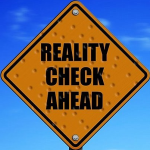 2010-DI-reality, PDF, 1M
2010-DI-reality, PDF, 1M
Kick-off
On Friday, Sept 4, we will be kicking-off the projects in the Orange space:
10:30am-11:00am Presentation by Jun HU about the theme
11:00am-12:30pm Presentation by prof.dr. Matthias Rauterberg about Reality and Design
13:00pm-15:00pm Arranging the space; Coach meeting the students
Looking forward to a successful semester.
Elevator-pitch presentations
On Thursday, May 20th, theme Realities is going to organize elevator-pitch presentations. You will be asked to present your project in 3 minutes, and the coaches (not only the one coaching your project, but the coaches from other projects as well) will comment on your project and give you some feedback. This activity is not to access your project, but to help you to prepare your project better for the final exhibition.
The schedule is as follows.
10:00am-11:00am, 1st year projects. All the 1st year students are required to be present. Others are welcome.
11:00am-12:00am, 2nd and 3rd year projects. All the 2nd and 3rd year students are required to be present. Others are welcome. If you do have a good reason not to present your project, please contact your coach.
Skills Market: Thursday, May 6
On Thursday, May 6, we are going to organize a skills market for all the students in the theme Realities. The idea is that coaches in the theme would be available during certain time slots in the space Orange, to give an inspiring presentation, to show you certain skills to get things done, or simply to answer your (practical) questions. No subscription is needed. No obligations.
What will be offered:
- 0900-1000: Presentation by Matthias Rauterberg: Realism
- 1000-1300: Lucian Reindl: From 2D to 3D
- 1000-1300: Joep Frens: Cardboard modeling
- 1300-1400: Saskia Bakker: consultancy on how to involve the user in your project
- 1400-1600: Jun Hu: Consultancy, software engineering and programming, (processing, java, arduino etc.)
The program is subject to change. Please check the realities website for the latest update:
Come to pick up the skills. All for free.
skôn
an exploration into textiles and electronics by
Paula Kassenaar
Paula Segura Meccia
The front part of the hoodie is a knitted variable resistor. Its resistance varies when you toy with it. This changing resistance value is used to change the intensity of the light strip in the front edge of the hoodie.
skôn means beautiful in dutch dialect, and in swedish skön also means nice or beautiful. This relates to both our cultural backgrounds.
camera: Gordon Tiemstra
model: Elien Vergeer
music: one evening by feist
Eindhoven University of Technology
Department of Industrial Design
Wearable Senses
one week module in Spring 2010
given by Michel Peeters, Carl Meegens and others

